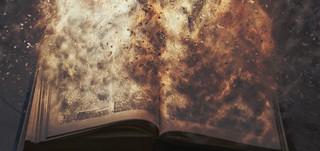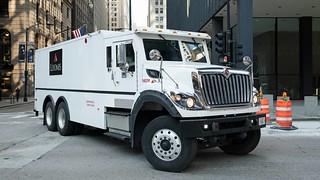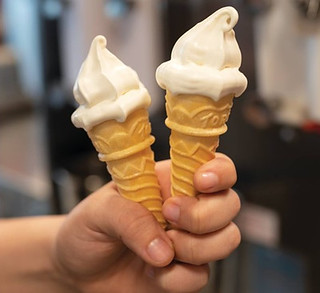
PREV ARTICLE
NEXT ARTICLE
FULL ISSUE
PREV FULL ISSUE
LOOSE CHANGE: OCTOBER 20, 2019Here are some additional items in the media this week that may be of interest. -Editor The Slow Burn of Acidified Paper
For bibliophiles, here's an article about a less dramatic but equally important threat to our collections - the "slow burn" of acidified paper. -Editor
It’s called a “slow fire,” this continuous acidification and subsequent embrittlement of paper that was created with the seeds of its own ruin in its very fibers. In a 1987 documentary on the subject, the deputy Librarian of Congress William Welsh takes an embrittled, acid-burned book and begins tearing pages out by the handful, crumbling them into shards with an ease reminiscent of stepping on a dried-up insect carcass. The destruction is inevitable. Depending on how a book was made and how it’s been stored, embrittlement can happen in as little as 30 to 100 years. Already, books have been lost, and the methods of preservation are too limited, time-consuming, and expensive to address the scale of the problem. Mass deacidification, where an alkaline neutralizing agent is introduced via a spray or solution applied to paper, once seemed like the golden solution; but while it can be used to prevent slightly acidified paper from deteriorating, it doesn’t reverse the effects of prior damage. The fallback is digitization—a fancy way to say mass-scanning, and the most used method of saving the content of a text, but not the book itself. In an article about the Library of Congress’ digitization efforts, Kyle Chayka reports that it would take literally decades of scanning to preserve the institution’s over 160 million object collection. At our existing technology’s current scanning pace, preserving the prints and photographs division alone would take about 300 years. To read the complete article, see:
 Money Moving Mishaps
An article on the Freight Waves site discusses the logistics of moving money across the nation, and highlights some exceptions to the normal high-security routine. -Editor
The Mint purchases the plain metal discs called a planchet from which it strikes pennies. In September 2016, a tractor-trailer hauling millions of copper-plated zinc planchets en route to the Philadelphia Mint struck a concrete median barrier on I-95 in Delaware and burst into flames. For 13 hours, clean-up crews used hand shovels and truck-loaded vacuums to recover the planchets scattered along the northbound lanes. Unlike the Brinks’ free-for-all in Indiana two years later, the public didn’t get close to the would-be pennies. Delaware State Police diverted traffic off the interstate at the exit before the crash site. To read the complete article, see:
Halloween Wooden Coins Good for Ice Cream
Len Augsburger of the Newman Numismatic Portal passed this article along: "Numismatics and ice cream – Eric P. Newman would be proud!" In the past we've discussed people who pass out coins in addition to candy treats at Halloween. This is about "wooden nickels" good for an ice cream treat in Newman's hometown of St. Louis. Unfortunately, the coins are not illustrated. Please enjoy the image of two tasty mini ice cream cones. -Editor
Lion’s Choice is selling packs of wooden coins to hand out to little ghosts and goblins this Halloween. They’re redeemable for a free mini custard cone at any of the restaurant chain’s locations. “With added concerns of dietary restrictions and allergies, we wanted to offer a safe and easy way for everyone to celebrate,” said Lion’s Choice president and CEO Michael Kupstas. The $5 packs include 25 wooden coins. They’re available at Lion’s Choice locations through Oct. 31. The mini cones have been a fixture at Lion’s Choice since the first restaurant opened in St. Louis more than 51 years ago. To read the complete article, see:
Wayne Homren, Editor The Numismatic Bibliomania Society is a non-profit organization promoting numismatic literature. See our web site at coinbooks.org. To submit items for publication in The E-Sylum, write to the Editor at this address: whomren@gmail.com To subscribe go to: https://my.binhost.com/lists/listinfo/esylum All Rights Reserved. NBS Home Page Contact the NBS webmaster 
|


